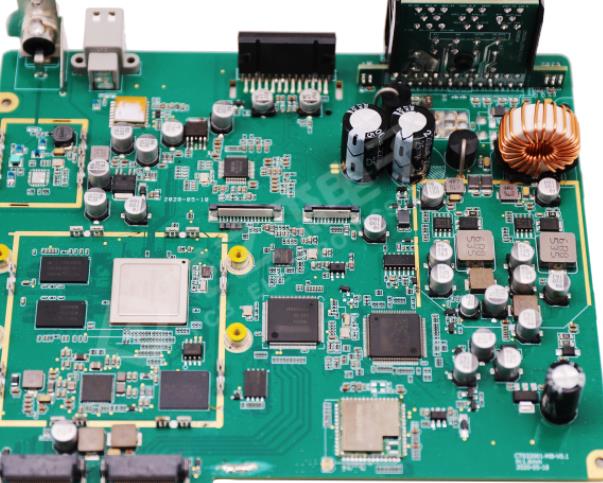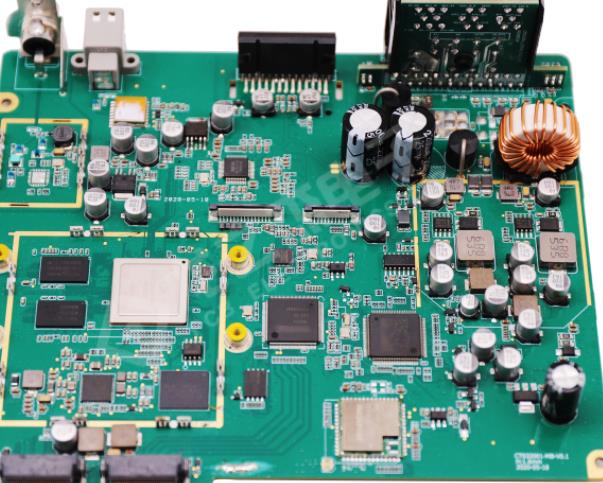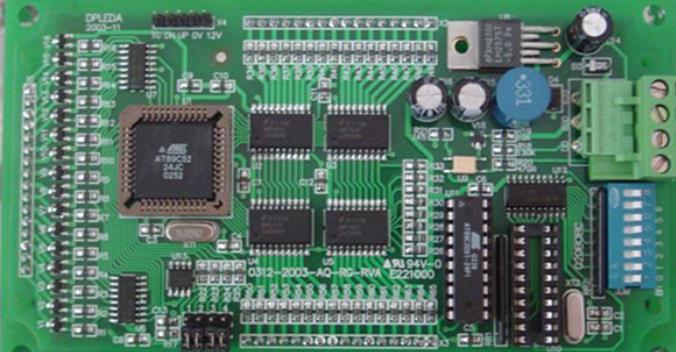Шэньчжэнь, район Баоань, улица Фуюн, улица Фуцяо, район 3, промышленный парк Лонгхуй 6

Advantages of SMT technology and poor wettability of PCB pads
SMT wafer processing technology
What are the advantages of SMT chip processing technology:
1. High reliability and strong anti vibration capability
SMT chip processing uses highly reliable chip components. The component has small volume, light weight and strong anti vibration ability. Automatic production is adopted, with high installation reliability. Generally, the rate of defective solder joints is less than 10 parts per million. The wave soldering technology of through hole plug-in components is one order of magnitude lower than the traditional wave soldering technology, which can ensure that the solder joint defect rate of electronic products or components is low. At present, nearly 90% of electronic products use SMT technology.
2. Small size and high assembly density of electronic products
The volume of SMT chip modules is only about 1/10 of traditional components, and the weight is only 10% of that of traditional components In general, the use of Surface Mount Technology can reduce the volume of electronic products by 40% - 60%, the quality by 60% - 80%, and the floor area and weight by a large margin
3. High frequency characteristic, reliable performance
Because the chip modules are firmly installed, the devices are usually lead-free or short leads, which reduces the impact of parasitic inductance and capacitance, improves the high-frequency characteristics of the circuit, and reduces electromagnetic and radio frequency interference. The high frequency of the circuit designed with SMC and SMD is up to 3GHz, while the chip module is only 500MHz, which can shorten the transmission delay time. It can be used in circuits with clock frequency higher than 16MHz. If MCM technology is used, the high-end clock frequency of computer workstation can reach 100MHz, and the additional power consumption caused by parasitic reactance can be reduced by 2-3 times.
Analysis Report on Poor Wettability of PCB Pad
The following is the analysis report of PCB pads:
1. Sample description
After the power performance test of the PCBA sample submitted for inspection, it is found that the BGA components may have poor welding (suspected of faulty welding). Now it is necessary to analyze whether the problem is caused by the PCB in the SMT process or by the PCB (poor welding). One PCBA sample and three PCB samples were used.
2. Analysis process
1. Microanalysis
Cut BGA parts on PCBA, inlay, plan, polish and etch the metallographic sections or cross sections of BGA solder joints with epoxy resin, and then observe and analyze them with Nikon optical microscope and Leica MZ6 stereo microscope. The fourth solder joint in the first row is defective, and there is obvious separation between the solder ball and the pad (Figure 1). Similar conditions were not checked for other solder joints.
2. Solderability analysis of PCB pad
3. Analysis of PCB surface condition
4. SEM and EDX analysis
5. Wettability analysis of solder paste
3. Conclusion
After the above analysis, the following conclusions can be drawn:
The fourth solder joint of the first row BGA part of the PCBA sample has a bad defect, and there is an obvious open circuit between the solder ball solder joint and the bonding pad.
The reasons for the open circuit are: poor wettability (solderability) of the PCB pad Organic matters are insulated and solder resistant, so that BGA solder ball cannot form a metallized layer with the pad during welding
SMT wafer processing technology
What are the advantages of SMT chip processing technology:
1. High reliability and strong anti vibration capability
SMT chip processing uses highly reliable chip components. The component has small volume, light weight and strong anti vibration ability. Automatic production is adopted, with high installation reliability. Generally, the rate of defective solder joints is less than 10 parts per million. The wave soldering technology of through hole plug-in components is one order of magnitude lower than the traditional wave soldering technology, which can ensure that the solder joint defect rate of electronic products or components is low. At present, nearly 90% of electronic products use SMT technology.
2. Small size and high assembly density of electronic products
The volume of SMT chip modules is only about 1/10 of traditional components, and the weight is only 10% of that of traditional components In general, the use of Surface Mount Technology can reduce the volume of electronic products by 40% - 60%, the quality by 60% - 80%, and the floor area and weight by a large margin

3. High frequency characteristic, reliable performance
Because the chip modules are firmly installed, the devices are usually lead-free or short leads, which reduces the impact of parasitic inductance and capacitance, improves the high-frequency characteristics of the circuit, and reduces electromagnetic and radio frequency interference. The high frequency of the circuit designed with SMC and SMD is up to 3GHz, while the chip module is only 500MHz, which can shorten the transmission delay time. It can be used in circuits with clock frequency higher than 16MHz. If MCM technology is used, the high-end clock frequency of computer workstation can reach 100MHz, and the additional power consumption caused by parasitic reactance can be reduced by 2-3 times.
Analysis Report on Poor Wettability of PCB Pad
The following is the analysis report of PCB pads:
1. Sample description
After the power performance test of the PCBA sample submitted for inspection, it is found that the BGA components may have poor welding (suspected of faulty welding). Now it is necessary to analyze whether the problem is caused by the PCB in the SMT process or by the PCB (poor welding). One PCBA sample and three PCB samples were used.
2. Analysis process
1. Microanalysis
Cut BGA parts on PCBA, inlay, plan, polish and etch the metallographic sections or cross sections of BGA solder joints with epoxy resin, and then observe and analyze them with Nikon optical microscope and Leica MZ6 stereo microscope. The fourth solder joint in the first row is defective, and there is obvious separation between the solder ball and the pad (Figure 1). Similar conditions were not checked for other solder joints.
2. Solderability analysis of PCB pad
3. Analysis of PCB surface condition
4. SEM and EDX analysis
5. Wettability analysis of solder paste
3. Conclusion
After the above analysis, the following conclusions can be drawn:
The fourth solder joint of the first row BGA part of the PCBA sample has a bad defect, and there is an obvious open circuit between the solder ball solder joint and the bonding pad.
The reasons for the open circuit are: poor wettability (solderability) of the PCB pad Organic matters are insulated and solder resistant, so that BGA solder ball cannot form a metallized layer with the pad during welding
Достаточно загрузить файлы Gerber, BOM и проектные документы, и команда KINGFORD предоставит полное предложение в течение 24 часов.






